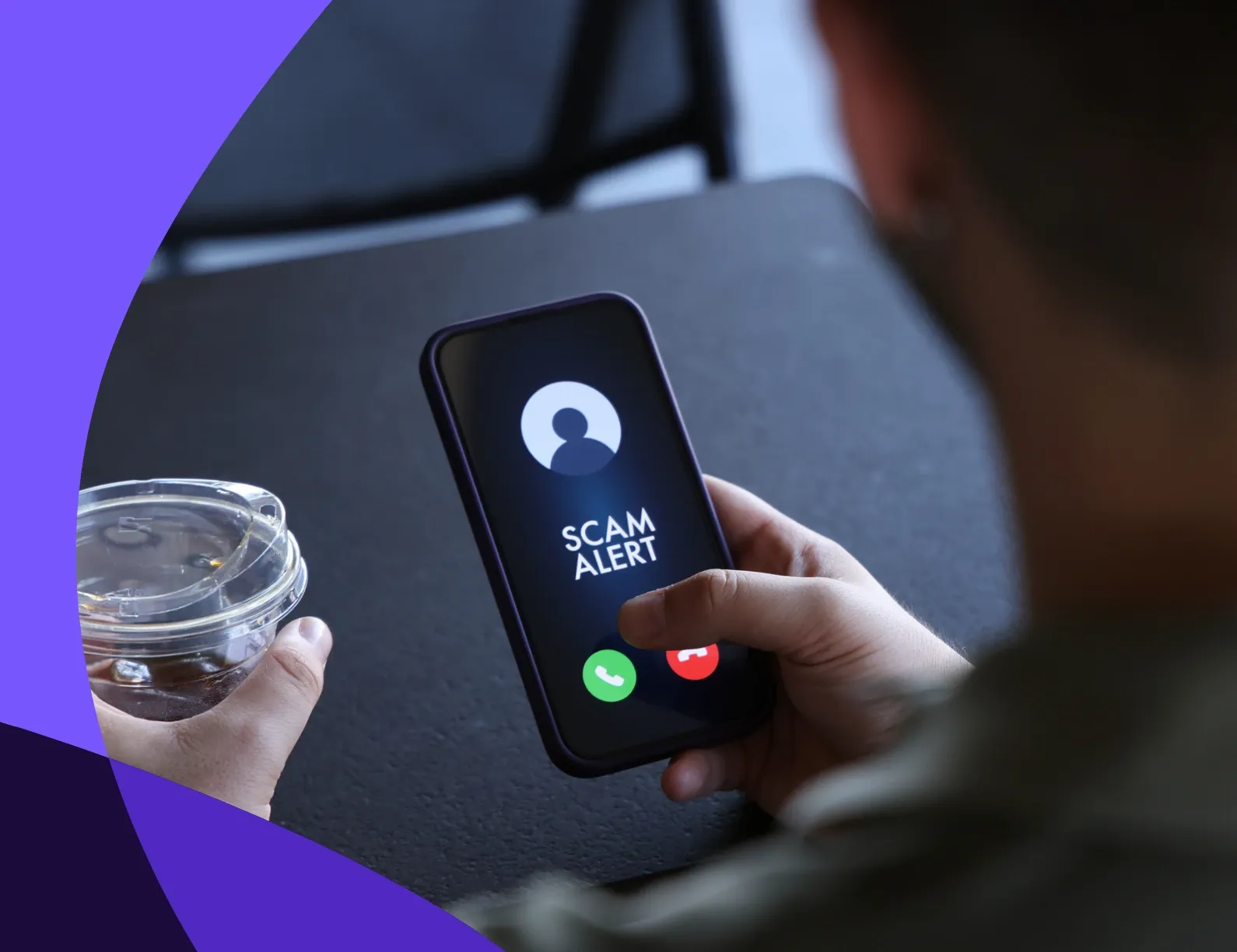
Why Call Center Numbers Get Marked as Spam and How to Boost Contact Rates
What outbound teams can do about spam flags, falling contact rates, and wasted lead spend.
Billions of robocalls are placed to consumers across the U.S. every month.
In response, carriers have taken an aggressive stance to curb unwanted calls. Legitimate businesses now see phone numbers marked as Spam Risk or Scam Likely sometimes before a new number has even been dialed.
The result? Outbound contact rates drop, conversions fall, and cost per acquisition climbs.
This guide explains:
How numbers get flagged
Why even clean caller IDs aren’t connecting
What you can do to keep campaigns connecting
What is “Spam Risk” or “Scam Likely” labeling?
Spam labeling is when a carrier flags your number as potentially unwanted. These labels often display on the recipient’s phone screen, making them far less likely to answer.
It’s meant to stop robocalls, but it’s hitting legitimate outbound operations hard.
How does a phone number get marked as spam?
Each major carrier (AT&T, Verizon, T-Mobile) uses its own proprietary, ever-changing algorithm to determine when to flag a number as potential spam.
Common triggers that can impact your phone number reputation score, even if the number isn’t officially “flagged”:
Manual spam reports from call recipients
Large spikes in call volume from a single number
High percentage of unanswered or short-duration calls
Excessive redials to the same lead in a short time frame
A high percentage of straight-to-voicemail calls
Here’s the kicker: your number can be “clean” in one carrier’s system while flagged in another. And even without a visible flag, hidden scoring can still cause low connection rates.
How clean numbers still fall short on connection
Call centers are burning through numbers faster than ever, especially in popular area codes. Even brand-new numbers may already be flagged before their first dial.
Why?
Carrier scoring systems differ clean on one can mean spam to another.
“Safe” numbers may still be deprioritized or mislabeled.
Reputation can shift in minutes, leaving you exposed between checks.
Rested numbers may have been spoofed illegally before you acquired them.
Bottom line: A clean caller ID doesn’t guarantee a pickup. What matters is whether that number connects in real time.
Why status quo caller ID tools aren’t enough
Traditional caller ID reputation management tools focus on a binary view: flagged or clean. In today’s environment, that’s not enough. A number can pass the “clean” test and still deliver poor contact rates due to carrier scoring you can’t see.
Carriers use different, often opaque spam labeling algorithms, and they’re labeling calls faster and with greater inconsistency. A number can look fine in your dashboard yet fail to connect, silently hurting results.
How to monitor and remove spam flags effectively
If a number is marked as spam or scam likely:
Rest the number for several weeks
Submit a remediation request with AT&T, T-Mobile, and Verizon
Register numbers with the Free Caller Registry
But remember, manual fixes are slow, and carriers are not required to act quickly. Caller ID reputation tool limitations mean you need more than just visibility.
Why call centers need a new approach
With reputation scoring now a spectrum, not a binary, and carrier labeling happening faster than ever, old tools and manual workflows can’t keep pace.
Modern solutions use:
Spectrum-Based Caller ID Scoring – Shows the full performance picture, not just “flagged vs clean.”
Automated DID Lifecycle Management – No spreadsheets, no manual ordering.
Real-Time Dialing Optimization – Routes each call through the best-performing caller ID for that lead, carrier, and location.
Call centers using these strategies have seen up to a 50% increase in contact rates and lower CPA, turning more leads into live conversations while cutting wasted spend.
That’s why leading contact center leaders are turning to solutions like Convoso Ignite™, built directly into the Convoso platform, to automate caller ID lifecycle management and optimize dialing connections in real time. Ignite continuously scores DID health across carriers, automatically procures new numbers when needed, and routes every call through the highest-performing DIDs so you boost contact rates, cut wasted spend, and reduce admin work.
Why “flagged vs clean” is outdated and what works instead
To reduce cost per acquisition and boost contact rates, leading outbound teams are shifting from reactive monitoring to real-time DID scoring and automated lifecycle management.
Convoso Ignite™ is built directly into the Convoso platform to proactively automate:
Automated DID Procurement: No spreadsheets, no manual ordering.
Spectrum-Based DID Health Scoring: Go beyond “clean vs flagged” to see the real performance picture.
Real-Time Dialing Optimization: Every call is routed through the best available DID for that lead, carrier, and location.
Outbound teams using Ignite have seen up to a 50% increase in contact rates and significantly lower CPA, turning more leads into live conversations while cutting wasted spend.
How to reduce the risk of getting numbers labeled as spam
While you can’t fully control carrier algorithms, you can reduce risk by:
Creating smart dialing cadences to avoid fatigue and flagging
Keeping calls per DID well under 100 per day
Using omnichannel outreach to balance your contact strategy
Prioritizing speed-to-lead for high-intent prospects
Following TCPA and state/local compliance rules
The game has changed—and so should your strategy
Outbound success depends on more than keeping your numbers “clean.”
In today’s calling environment, “clean” numbers alone won’t protect your performance. Success requires continuous insight, automation, and performance-first dialing to connect more calls, protect lead spend, and grow revenue.
Stop reacting to flags. Start optimizing for every connection.
Schedule a demo to see how Convoso helps contact centers protect performance and grow revenue.
Schedule a demo
Supercharge your sales with our AI-powered contact center platform.
